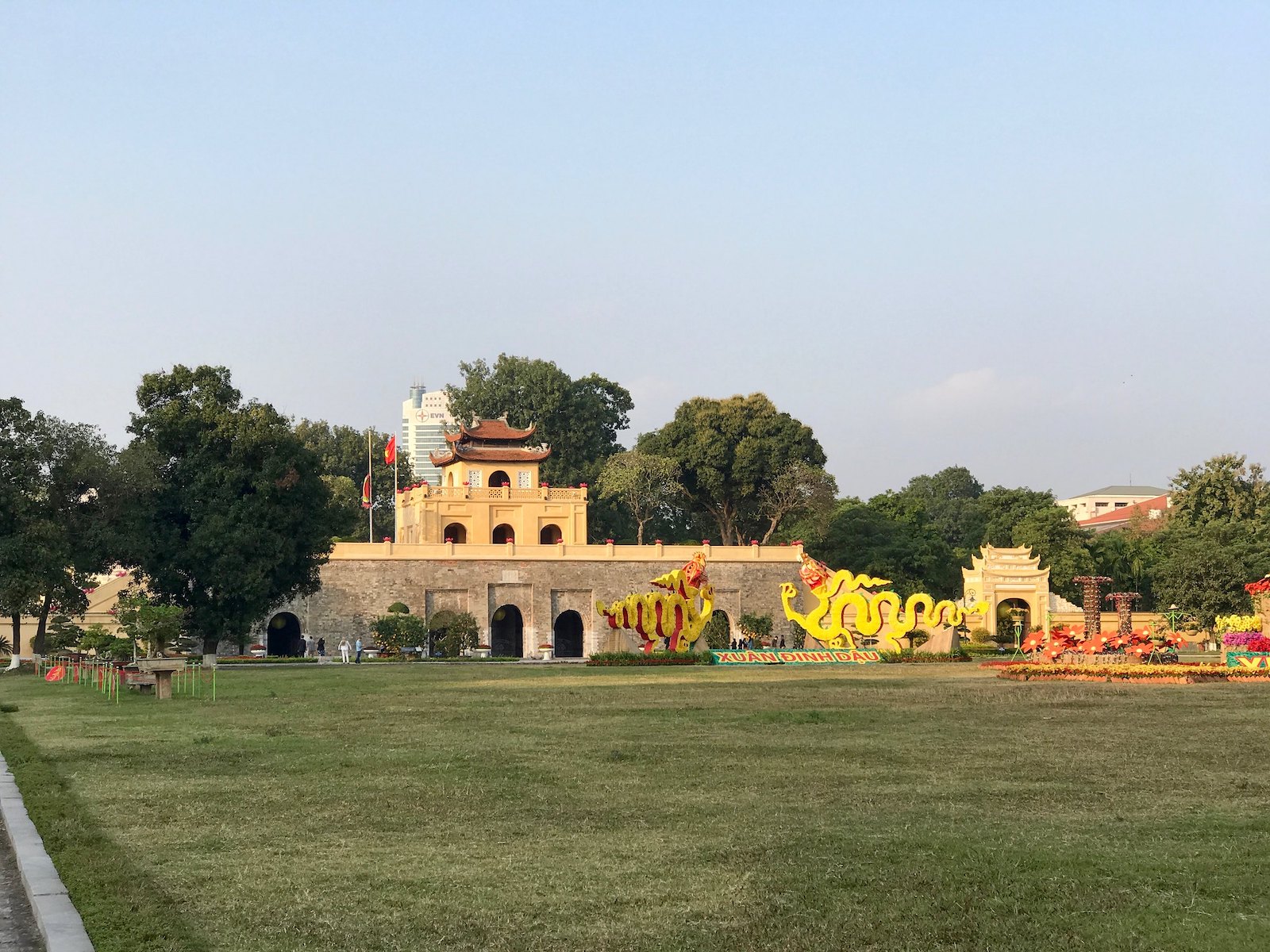Located in the heart of Hanoi, the Imperial Citadel of Thăng Long is a UNESCO World Heritage site that dates back to the 11th century. Even before the complex was there, the site itself was the hub for the country’s politics for 13 consecutive centuries and the capital of Vietnam for eight.
Over the years, the Citadel underwent several changes and witnessed many conflicts of wars, destroying much of its original foundation and structures.
History

The Citadel was first built in 1011 under the direction of King Ly Thai To of the Ly Dynasty. It was also home to the Tran and early Le dynasties, who continued to add more buildings and repair the existing ones as needed. During the Mac and late Le dynasties, the Citadel suffered much damage due to battles, particularly between the years 1527-1592.
Finally, during the last Nguyen dynasty, the city’s name was changed to “Hanoi,” as it’s known today. However, the complex is still referred to as Thang Long to maintain its historical significance.
In 1945, the Imperial Japanese Army used the Citadel to incarcerate more than 4,000 French colonial soldiers who were apprehended. Additionally, in the mid-1950s, the complex was repurposed as the country’s Ministry of Defense headquarters.
At the turn of the 21st century, archeological digs were initiated on the Citadel grounds. Lots of exciting artifacts dating all the way back to the 6th century were discovered. Some of the items dug up included pottery pieces, coins, and various ceramics that are now showcased in the attraction’s display room.
Notable Buildings at the Citadel

The Imperial Citadel of Thang Long was changed and expanded over the years. Even though many of the original structures are no longer intact, some of the ones built later are worth a stop.
Doan Mon (Southern Gate)
Designed strictly for royal members during the Le Dynasty, this beautifully decorated gate is now a must-see attraction on the grounds.
Bac Mon (North Gate)
One of the two remaining gates left at the Citadel, this gate is now a place where visitors come to pay respects to former governors Nguyen Tri Phuong and Hoang Dieu. It’s made of bricks and stone, which provided a place for residents to hide during the French invasion in the 19th century.
Ky Dai (Flag Tower)
Standing at 33.4 meters/109.5 feet, the flag tower is one of the most well-known symbols of Hanoi. Built in 1812, it features three stories and the flag of Vietnam on top. It was used as a military post during the French colonial era.
Kinh Thien Palace
Set in the middle of the Citadel, the Kinh Thien Palace was constructed in 1428 and operated as a place for celebrating national holidays and imperial ceremonies. Even though it was a location with a lot of significance, all that’s left of the palace is its foundation and steps with the originally carved dragons.
Hau Lau (Princess Pagoda)
This three-story temple was made for princesses and queens to use. It took a lot of damage in the 19th century but was rebuilt by the French and is a worthy place for a quick visit.
In some situations, the Imperial Citadel of Thang Long isn’t too far from Hanoi’s Old Quarter District, making it an easy place to reach by taxi, bus, motorbike, or even walking. There is a cost to go inside, but it is free of charge for kids ages 15 and under. It’s also a good idea to wear respectful attire.
Details
Address: 9 Hoang Dieu, Dien Bien, Ba Dinh District, Hanoi, Vietnam
Phone: 024 3734 5427
Season: Year-round
Hours: Tuesday-Sunday, 8 am – 5 pm
Website: hoangthanhthanglong.com


 Vinh Hung Ancient Tower – Bac Lieu Province
Vinh Hung Ancient Tower – Bac Lieu Province